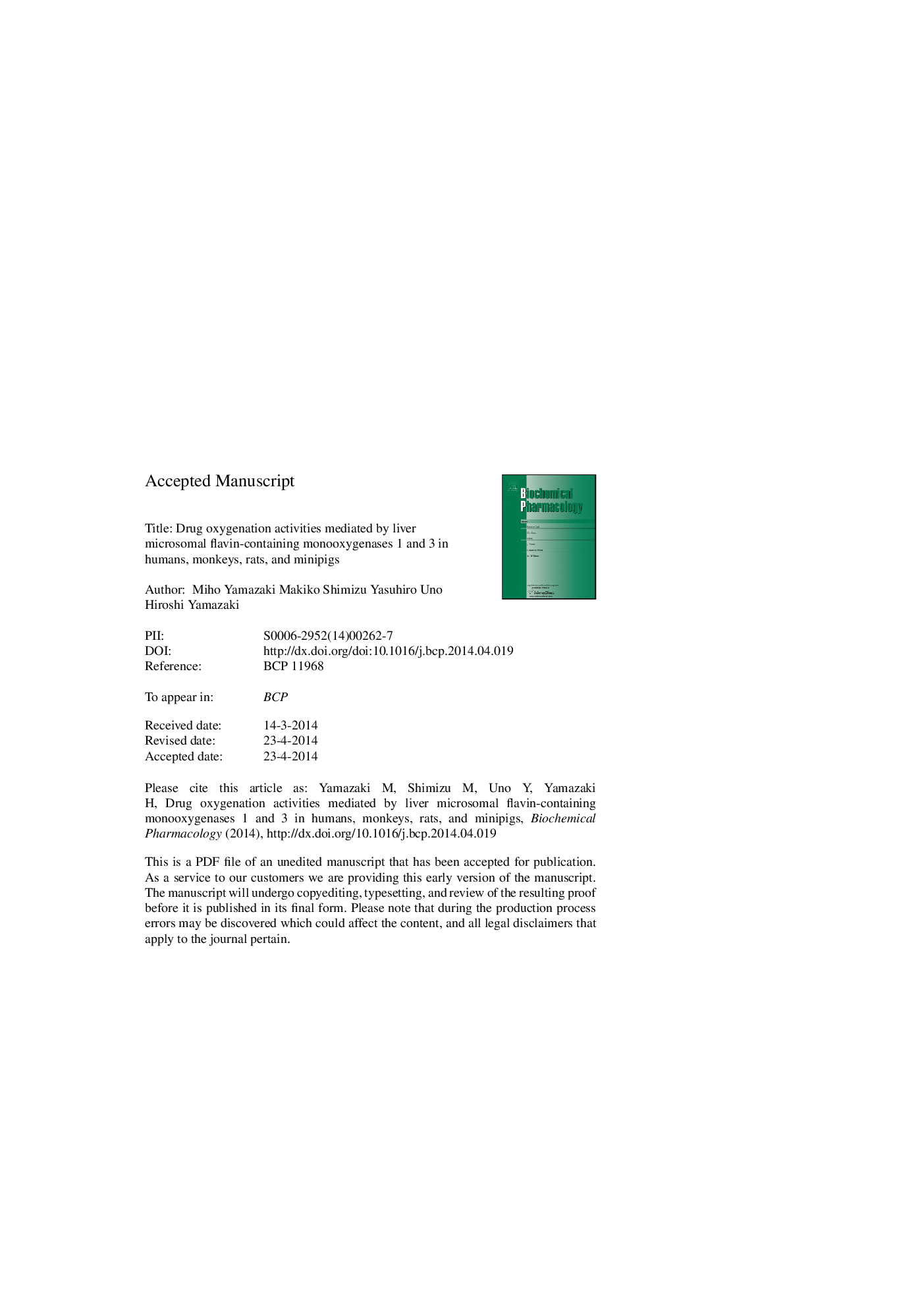| Article ID | Journal | Published Year | Pages | File Type |
|---|---|---|---|---|
| 5823554 | Biochemical Pharmacology | 2014 | 30 Pages |
Abstract
Liver microsomal flavin-containing monooxygenases (FMO, EC 1.14.13.8) 1 and 3 were functionally characterized in terms of expression levels and molecular catalytic capacities in human, cynomolgus monkey, rat, and minipig livers. Liver microsomal FMO3 in humans and monkeys and FMO1 and FMO3 in rats and minipigs could be determined immunochemically with commercially available anti-human FMO3 peptide antibodies or rat FMO1 peptide antibodies. With respect to FMO-dependent N-oxygenation of benzydamine and tozasertib and S-oxygenation of methimazole and sulindac sulfide activities, rat and minipig liver microsomes had high maximum velocity values (Vmax) and high catalytic efficiency (Vmax/Km, Michaelis constant) compared with those for human or monkey liver microsomes. Apparent Km values for recombinantly expressed rat FMO3-mediated N- and S-oxygenations were approximately 10-100-fold those of rat FMO1, although these enzymes had similar Vmax values. The mean catalytic efficiencies (Vmax/Km, 1.4 and 0.4 minâ1 μMâ1, respectively) of recombinant human and monkey FMO3 were higher than those of FMO1, whereas Vmax/Km values for rat and minipig FMO3 were low compared with those of FMO1. Minipig liver microsomal FMO1 efficiently catalyzed N- and S-oxygenation reactions; in addition, the minipig liver microsomal FMO1 concentration was higher than the levels in rats, humans, and monkeys. These results suggest that liver microsomal FMO1 could contribute to the relatively high FMO-mediated drug N- and S-oxygenation activities in rat and minipig liver microsomes and that lower expression of FMO1 in human and monkey livers could be a determinant factor for species differences in liver drug N- and S-oxygenation activities between experimental animals and humans.
Keywords
Related Topics
Health Sciences
Pharmacology, Toxicology and Pharmaceutical Science
Pharmacology
Authors
Miho Yamazaki, Makiko Shimizu, Yasuhiro Uno, Hiroshi Yamazaki,
